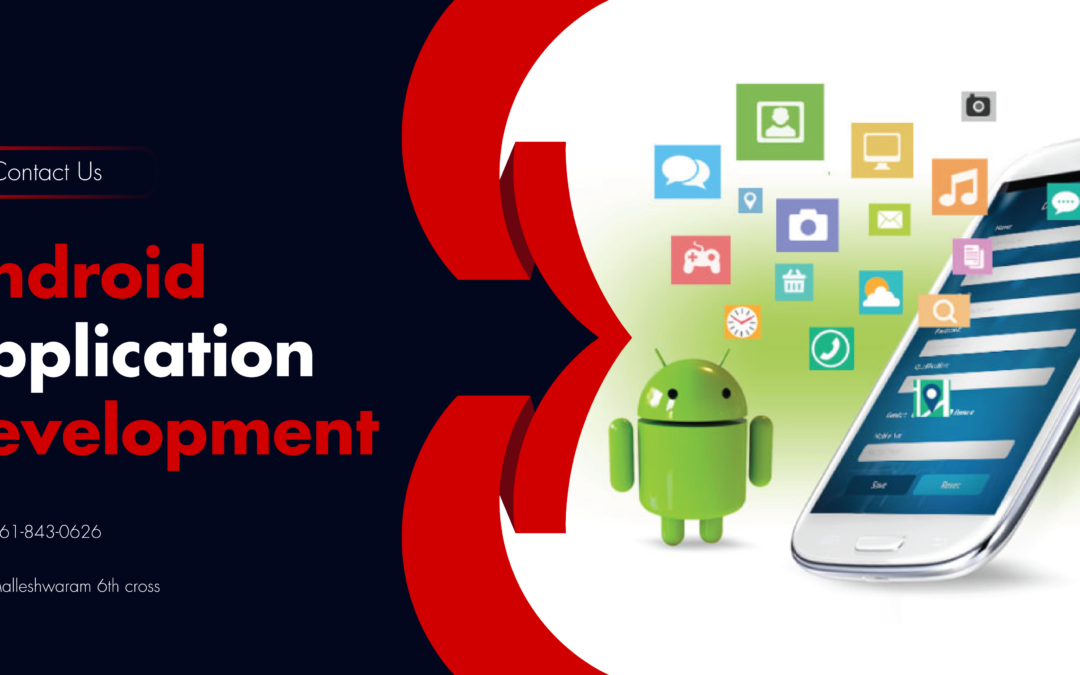Android Application Development Tutorial with Kotlin/Java. Master Android Studio, UI design, and build interactive apps step-by-step.
Tutorial teaches you to build apps for Android devices. It covers UI design, coding in Kotlin/Java, and publishing apps.

Are you eager to create your first Android application but don’t know where to start? This tutorial will take you step-by-step through the Android app development process, providing you with the foundation needed to bring your ideas to life.
Introduction: Why Learn Android Application Development?

In today’s digital landscape, the importance of Android apps cannot be overstated; furthermore, with billions of active users worldwide, learning Android application development opens up a world of opportunities in the booming mobile app development industry. If you’ve ever thought about diving into this dynamic field, now is the perfect time to learn Android.
The demand for skilled Android developers continues to rise as businesses increasingly recognize the need for a mobile presence. By mastering this skill, you position yourself at the forefront of a lucrative career path that offers not only job security but also creative freedom and innovation. Whether you’re looking to create your apps or contribute to exciting projects within established companies, a career in Android development can be incredibly rewarding.
Moreover, with resources and communities readily available online, learning Android has never been more accessible. Embrace this opportunity to enhance your skill set and secure your place in an industry that is shaping our future—start your journey into Android app development today!
Who is it for?
- For those new to programming, here’s how to start learning Android development from the ground up.
- Intermediate developers seeking to refine their skills and learn best practices.
- Professionals aiming to build production-ready applications.
Would you like help creating content for such a tutorial or more details on a specific topic?
Topic Selection
- Do you want an outline or detailed content for specific topics, like UI design, API integration, or publishing apps?
Beginner-Friendly Examples
- Need code snippets, step-by-step walkthroughs, or real-world examples to include in the tutorial?
Project Ideas
- Looking for beginner or advanced project ideas that learners can build while following the tutorial?
Visual Content Suggestions
- Suggestions for diagrams, workflows, or visual aids to enhance the tutorial.
Tutorial Format
- Guidance on structuring your tutorial (e.g., video lessons, text-based guides, or interactive modules).
Target Audience Personalization
- Should the tutorial cater to complete beginners, intermediate developers, or industry professionals?
The Basics of Android Application Development Tutorial: What You Need to Know
Embarking on the Android application development journey can be exciting and daunting, but understanding the basics is crucial for success. First and foremost, grasping Android programming basics is essential. You need to familiarize yourself with the fundamental concepts of how Android operates, including its architecture and components like Activities, Services, and Broadcast Receivers.
Regarding coding, you have two primary languages: Java for Android and Kotlin for Android apps. While Java has been a staple in the programming world for years, Kotlin has quickly gained popularity due to its modern features and concise syntax. Choosing between these two will depend on your project requirements and personal preference; however, learning both can significantly enhance your versatility as a developer.
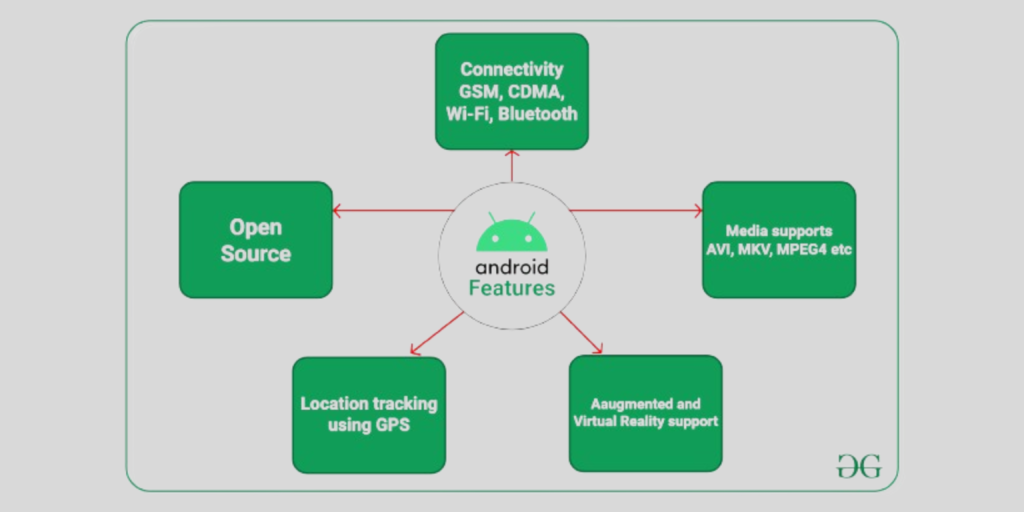
Equipping yourself with the right tools is also vital in this field. You’ll want to get comfortable with an Integrated Development Environment (IDE) such as Android Studio—this is where most of your coding will take place. Additionally, setting up the SDK (Software Development Kit) is a key step that allows you to access all necessary libraries and tools needed for developing robust applications.
By mastering these foundational elements—Android programming basics, Java or Kotlin proficiency, essential development tools, and proper SDK setup—you’ll be well on your way to creating innovative apps that can make a real impact in today’s digital landscape. Additionally, embracing this learning curve is an investment in your future as an adept Android developer!
Step-by-Step Guide to Building Your First Android App
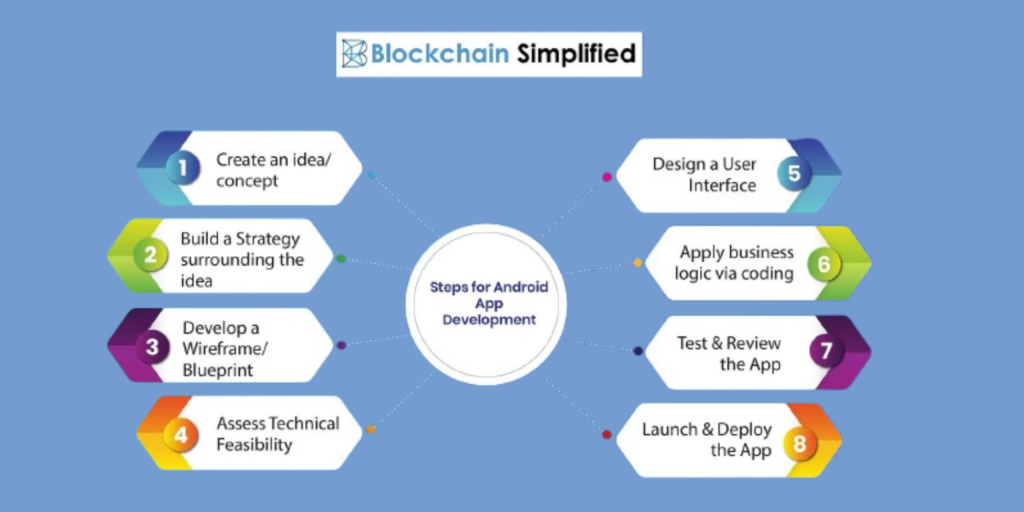
Building your first Android app can be an exhilarating journey; moreover, with the right guidance, it’s entirely achievable! Therefore, this step-by-step guide will walk you through the process, ensuring that even beginners can create an app from scratch.
Start with a solid foundation by choosing beginner-friendly app projects. These projects will boost your confidence and enhance your understanding of the Android ecosystem. Whether you opt for a simple to-do list or a weather application, each project is a stepping stone toward mastering app development.
Next, focus on user interface design in Android. A well-designed UI is crucial for user engagement and satisfaction. Familiarize yourself with XML layouts and design principles that ensure your app is both functional and visually appealing.
As you progress through this first Android app tutorial, remember to leverage online resources and communities for support; in fact, there’s a wealth of information available—from forums to video tutorials—that can help troubleshoot issues you may encounter along the way.
By following these steps diligently, you’ll not only build your first Android app but also lay the groundwork for more complex projects in the future. Embrace this opportunity to innovate and express your creativity in the ever-evolving world of mobile applications!
Understanding the Android Architecture and Components: Android Application Development Tutorial
Understanding Android architecture and components is essential for any developer looking to create robust and efficient applications; moreover, at the heart of Android development are the Android Architecture Components, which, importantly, provide a framework for managing UI-related data in a lifecycle-conscious way. These components, such as Activities and Fragments, therefore, serve as the building blocks of your app’s user interface. Activities represent a single screen with a user interface, while Fragments allow for more modular UI design by enabling you to create reusable portions of your app.
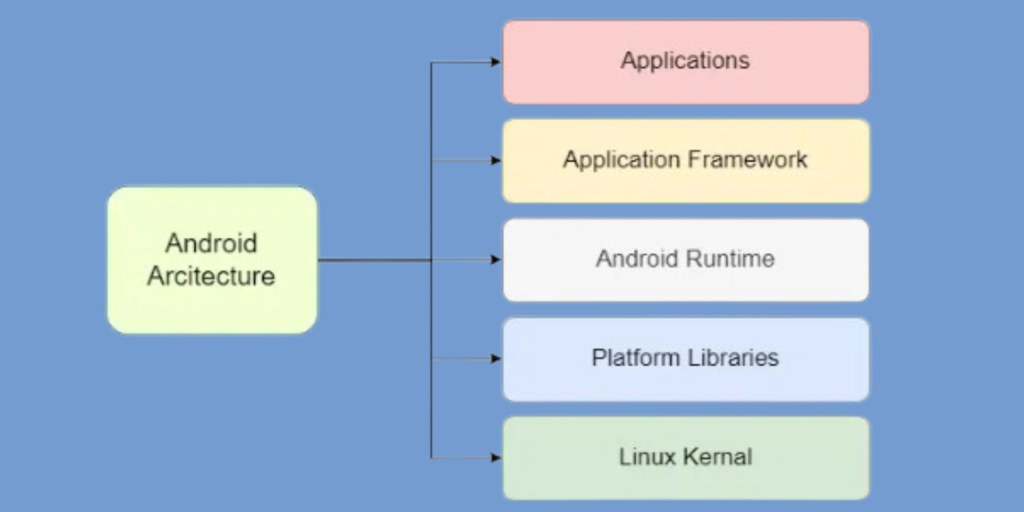
In addition to these UI components, services play a crucial role in performing long-running operations in the background without direct user interaction. This ensures that your app remains responsive while handling tasks such as network calls or data processing. Broadcast receivers further enhance communication within your application by allowing it to listen for system-wide broadcast announcements—everything from connectivity changes to battery status updates.
Data storage options in Android are equally vital to understand. With choices ranging from Shared Preferences for simple key-value pairs to SQLite databases for structured data storage, developers, therefore, have the flexibility they need based on their application’s requirements. Consequently, by mastering these core components and understanding how they interact within the Android ecosystem, you’ll be well-equipped to build high-quality applications that deliver seamless user experiences. Therefore, embracing this knowledge is not just beneficial—it is necessary for success in today’s competitive mobile development landscape.
Best Practices for Developing High-Quality Android Applications Development Tutorial
Adhering to established best practices is non-negotiable when developing high-quality Android applications. First and foremost, embracing Android coding best practices ensures that your code is clean, maintainable, and scalable. This means following conventions such as using meaningful variable names, structuring your project logically, and keeping methods concise.
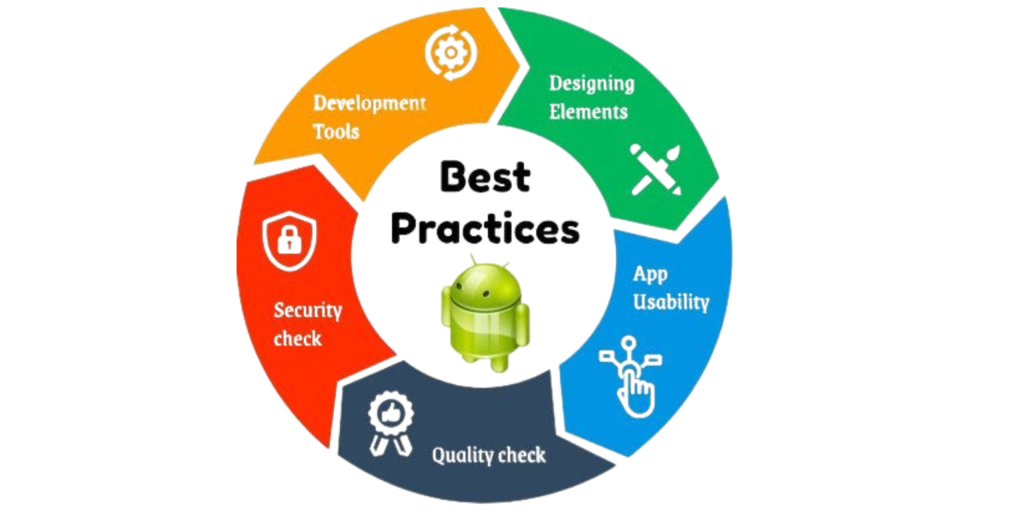
Next up are performance optimization tips for apps; therefore, it’s imperative to focus on efficiency from the outset. For example, optimizing images for faster loading times and minimizing memory usage by using appropriate data structures are crucial. Moreover, implementing lazy loading techniques can drastically improve app responsiveness.
Moreover, mastering debugging techniques in Android Studio can save developers countless hours of frustration. Utilize built-in tools like Logcat for real-time logging and the Android Profiler to monitor app performance metrics effectively.
Finally, never underestimate the impact of user experience design principles on your application’s success. Prioritize intuitive navigation, responsive design elements, and accessibility features to ensure that users find your app not only functional but also enjoyable.
By integrating these practices into your development process, you’ll create robust applications that stand out in a crowded marketplace while delivering exceptional value to users.
The Future of Android Application Development Tutorial: Trends to Watch Out For
As we look ahead to 2024, the landscape of Android application development is set to undergo significant transformations; therefore, staying updated with these emerging trends is not just beneficial but essential for developers aiming to future-proof their skills.
One major trend to watch is the integration of artificial intelligence and machine learning into mobile applications. These technologies are no longer just buzzwords; they enable apps to deliver personalized experiences, automate tasks, and improve user engagement like never before. Consequently, developers who embrace these innovations will be at the forefront, creating smarter applications that can seamlessly adapt to user behavior.
Another vital trend is the rise of 5G technology, which promises faster data transfer speeds and more reliable connectivity. This advancement opens up new possibilities for app functionality, allowing developers to create richer multimedia experiences and real-time interactions that were previously unattainable.
Finally, cross-platform development frameworks are gaining traction as businesses seek cost-effective solutions without compromising on quality. Familiarizing yourself with tools like Flutter or React Native will, in turn, position you as a versatile developer capable of catering to a broader audience.
In summary, by keeping an eye on these trends and adapting your skill set accordingly, you not only enhance your marketability but also ensure that your work remains relevant in an ever-evolving tech landscape. The future of Android application development holds immense potential—don’t miss out on being part of this exciting journey!
Step 01: Understand the Basics
Before diving into development, it’s important to grasp the core concepts:
What is Android?
Android is an open-source mobile operating system developed by Google, powering billions of devices worldwide; consequently, gaining skills in Android app development enables you to access and leverage this vast ecosystem.
Programming Languages for Android Application Development Tutorial
- Kotlin: The modern and preferred language for the Android development.
- Java: A reliable alternative, especially for legacy apps.
Step 02: Set Up Your Development Environment
To start developing Android apps, follow these steps:
Install Android Studio
- Download Android Studio from the official website.
- Follow the installation instructions for your operating system.
- Launch Android Studio and install the required SDK tools during the setup wizard.
Configure Your Environment
- SDK Manager: Make sure to have the most recent versions of the Android SDK installed.
- AVD Manager: Set up an Android Virtual Device (emulator) for testing your apps.
Step 03: Create Your First Android App
- Open Android Studio and select New Project.
- Choose the “Empty Activity” template.
- Configure your project:
- Name: Your app’s name.
- Language: Kotlin (recommended) or Java.
- API Level: Choose the minimum version your app will support.
- Click Finish to generate the project.
Step 04: Understand the Project Structure
Key Components:
- Manifest File (AndroidManifest.xml): Defines app permissions and components.
- Java/Kotlin Files: Contains your app’s logic.
- Resources (res folder): Stores UI layouts, images, and strings.
- Gradle Scripts: Manages dependencies and builds.
Step 05: Build the User Interface (UI)
Design your app’s interface using XML or the visual layout editor in Android Studio.
Example: Creating a Button
In res/layout/activity_main.xml:
<Button
android:id=”@+id/button”
android:layout_width=”wrap_content”
android:layout_height=”wrap_content”
android:text=”Click Me!” />
Example: Handling Button Clicks
class MainActivity : AppCompatActivity() {
override fun onCreate(savedInstanceState: Bundle?) {
super.onCreate(savedInstanceState)
setContentView(R.layout.activity_main)
Val button: Button = findViewById(R.id.button)
button.setOnClickListener {
Toast.make text(this, “Button Clicked!”, Toast.LENGTH_SHORT).show()
Step 06: Delve into Fundamental Android Principles
- Activity Lifecycle:
- Learn the stages of an activity (e.g., onCreate, onStart, onPause).
- Intents:
- Navigate between screens or perform actions (e.g., open a browser).
- RecyclerView:
- Display lists of data efficiently.
- Data Storage:
- Use SharedPreferences, Room Database, or SQLite for saving data.
- Networking:
- Integrate APIs using libraries like Retrofit or Volley.
step 07: Test and Debug Your App Android Application Development
- Logcat: View logs to debug issues.
- Emulator/Real Device: Test your app in different environments
Step 08: Publish Your App with our Centre
- Prepare for Release:
- Sign your app with a release key.
- Optimize the APK size.
- Upload to Google Play:
- Set up a developer account on the Google Play Console.
- Submit your app for review and publish it.
Additional Tips for Success
- Stay Updated: Follow Android’s official developer blog.
- Practice Regularly: Build small projects to strengthen your skills.
- Join Communities: Participate in developer communities by connecting with others on platforms like Stack Overflow and Reddit.
Tools You Will Use
- Android Studio: The official IDE for Android development.
- Emulators and Real Devices: For testing your apps.
- Libraries and Frameworks: Retrofit, Glide, Firebase, etc., for enhancing functionality.
Best Resources to Learn Android Development
1. Online Platforms
- Google’s Android Basics: Free beginner-friendly courses.
- Udemy and Coursera: Paid courses with structured content.
2. Books
- Android Programming: The Big Nerd Ranch Guide
- Kotlin for Android Developers
3. YouTube Channels
- Code With Harry
- The Net Ninja
4. Communities
- Stack Overflow: For troubleshooting and queries.
- Reddit’s r/androcide: For tips and discussions.
Conclusion Android Application Development Tutorial
Learning Android application development is an exciting journey that not only enables you to create powerful apps for millions of users but also encourages you to start small, explore various features, and continuously improve your skills. With dedication and consistent effort, you’ll eventually be publishing apps that not only meet users’ needs but also make a significant difference in the world.

GET YOUR EXCLUSIVE OFFER

